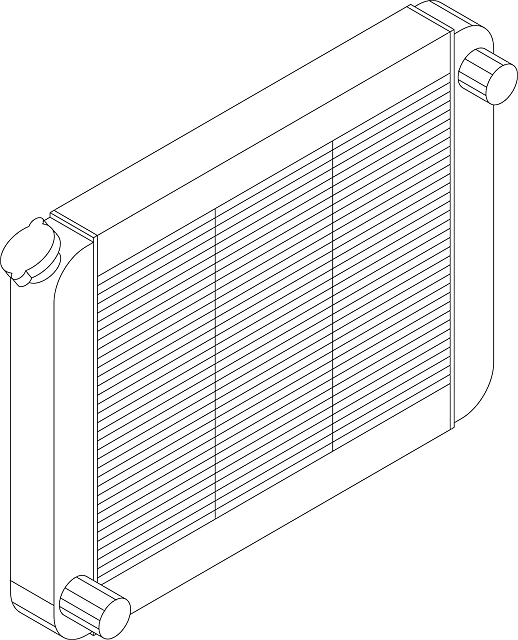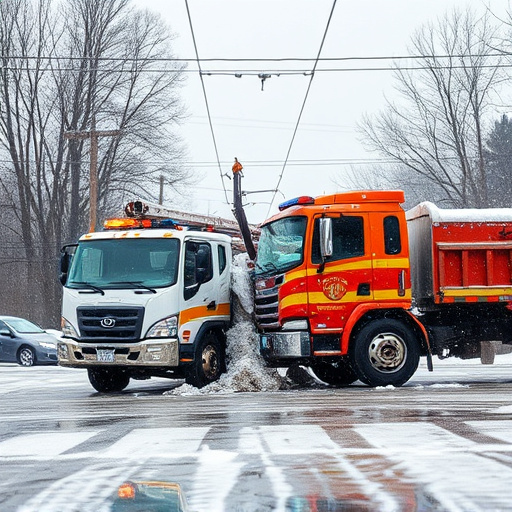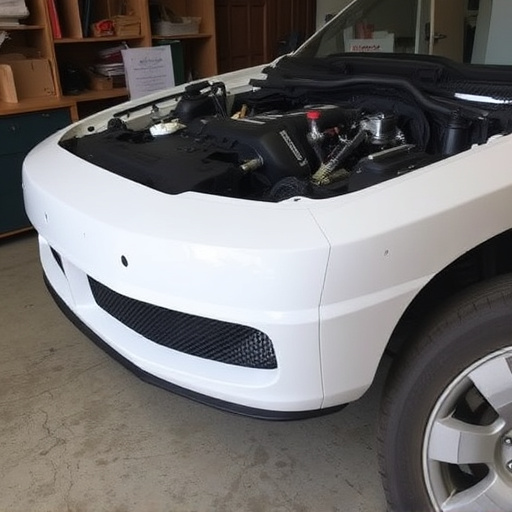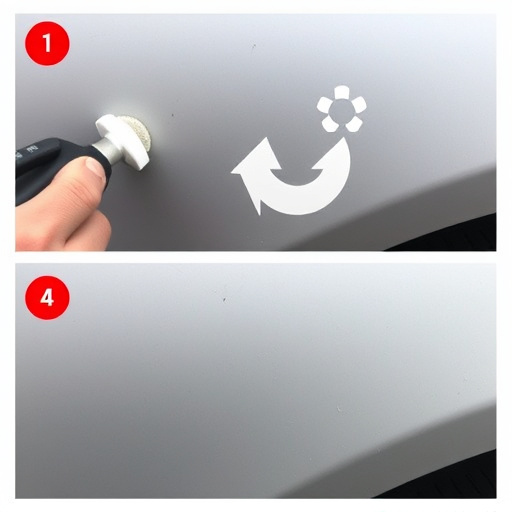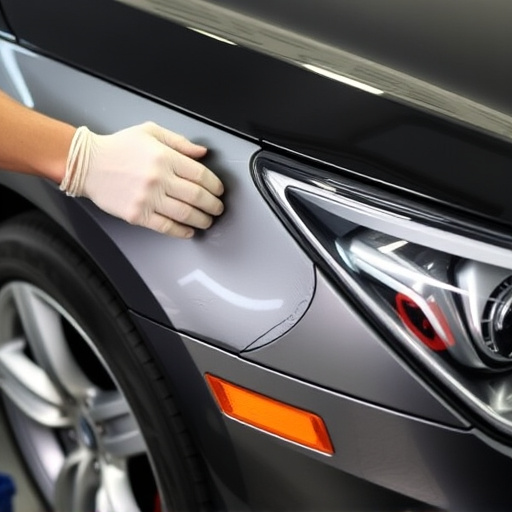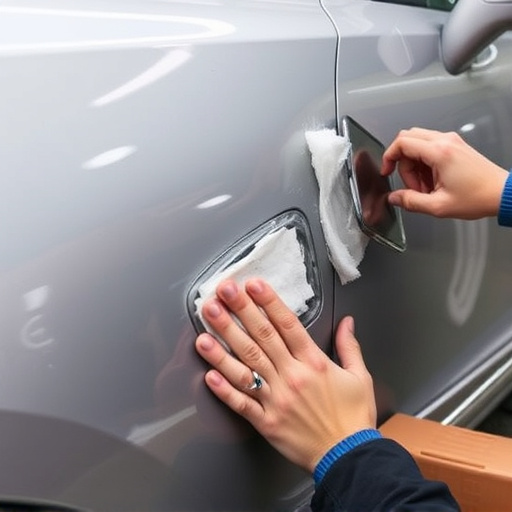Tesla's vegan leather, while appealing for its sustainability, is prone to wear and tear. Early detection of scratches, scuffs, and discolouration is key to maintaining aesthetics. Professional repairs can restore vehicle interiors to their original state, with DIY options offering cost-effective and eco-friendly alternatives. By assessing damage, cleaning, patching, stitching, and conditioning, owners can effectively repair Tesla vegan leather, enhancing the car's longevity and retaining its premium appeal while reducing environmental impact.
Tesla vehicles are known for their sleek, premium interiors, featuring vegan leather as a standard option. However, over time, this durable material can show signs of wear and tear. This article explores how to effectively repair Tesla’s vegan leather to maintain its high-end appearance. We’ll delve into common issues, highlight the environmental benefits of DIY repairs, and provide a step-by-step guide to ensure your vehicle’s interior looks as good as new.
- Understanding Tesla's Vegan Leather and Common Issues
- The Benefits of DIY Repair for Your Wallet and the Environment
- Step-by-Step Guide to Effective Vegan Leather Restoration
Understanding Tesla's Vegan Leather and Common Issues

Tesla’s vegan leather is a popular choice for those seeking a sustainable yet premium interior option. This innovative material, free from animal-derived components, has become a signature feature in many Tesla models. However, like any other automotive finish, it’s not immune to wear and tear. Common issues include scratches, scuffs, and discolouration, often caused by exposure to sunlight, everyday use, or accidental damage.
Identifying these problems early is key to maintaining the vehicle’s stylish aesthetic. Many owners opt for professional Tesla vegan leather repair services to restore their seats and dashboards to their original condition. A skilled vehicle body shop can offer a range of solutions, from simple touch-ups to more extensive repairs, ensuring your Tesla retains its distinctive and eco-friendly appeal while also enhancing its longevity.
The Benefits of DIY Repair for Your Wallet and the Environment
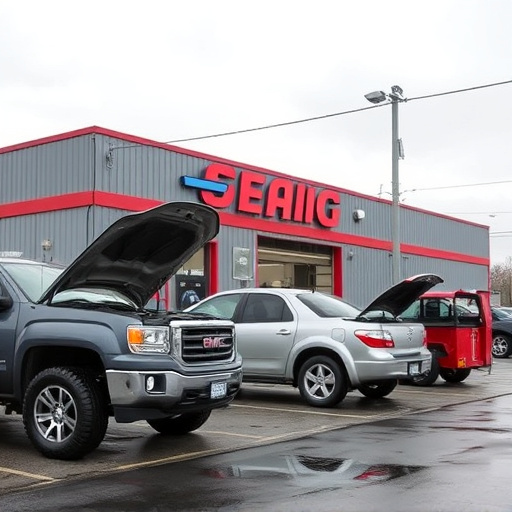
Opting for a DIY Tesla vegan leather repair can be a cost-effective and environmentally friendly choice. Traditional auto repair shops often charge premium prices for even minor damages, especially with specialized materials like vegan leather. By taking on the repair yourself, you can significantly save on costs, making it an attractive option for those looking to maintain their Tesla’s premium appearance without breaking the bank.
Moreover, performing your own repairs reduces the environmental impact associated with frequent visits to auto repair shops. The constant production and disposal of new parts contribute to waste and emissions. With DIY repairs, you’re minimizing these negative effects, promoting a more sustainable approach to car maintenance. This eco-conscious decision not only benefits your wallet but also contributes to a greener future.
Step-by-Step Guide to Effective Vegan Leather Restoration
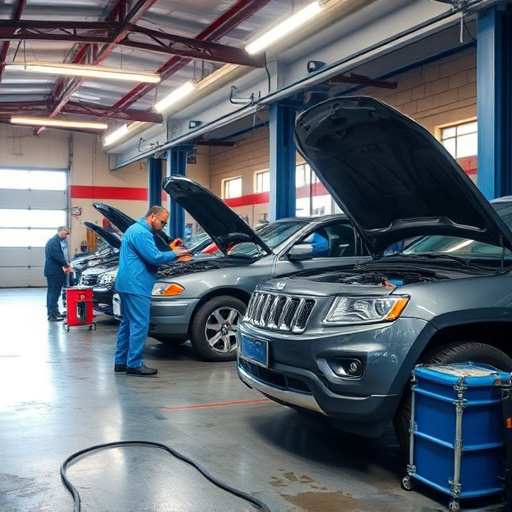
Restoring Tesla’s vegan leather to its former glory can be a straightforward process when followed correctly. Here’s a step-by-step guide for an effective Tesla vegan leather repair:
1. Assess the Damage: Inspect the vegan leather for tears, cracks, or deep scratches. For minor scrapes and surface imperfections, you might only need a simple cleaning and conditioning. More severe damage may require patching or re-sewing.
2. Prepare the Area: Clean the affected area with a mild soap and warm water solution using a soft cloth. Dry thoroughly to remove any moisture that could impede repair. For car scratch repair, this step is crucial as it ensures the surface is free from contaminants that could prevent adhesive bonding.
3. Patching and Stitching (if necessary): If there are tears or holes, cut out a patch of matching vegan leather. Use a needle and thread to stitch around the edge, securing the patch firmly in place with strong adhesive once stitching is complete. This step is particularly relevant for vehicle collision repair where structural integrity needs to be maintained.
4. Color Matching: Apply colorant to match the surrounding leather using a small brush or cotton swab. Carefully blend the colorant until it seamlessly integrates with the existing material, ensuring a professional-looking finish.
5. Conditioning and Polishing: Use a vegan leather conditioner to nourish the repair area while enhancing its appearance. Follow up with a microfiber cloth for polishing, creating a smooth, lustrous surface that matches the premium look of Tesla’s interior. This step also aids in car bodywork restoration by sealing any gaps or openings.
Tesla vegan leather, known for its premium appearance, can maintain its aesthetic appeal through DIY repairs. By addressing common issues like scratches and cracks with a step-by-step guide, you not only save money but also contribute to environmental sustainability. Embracing these simple restoration techniques allows Tesla owners to keep their vehicles looking their best while reducing waste associated with leather replacement. Therefore, prioritizing Tesla vegan leather repair is both practical and eco-friendly.
